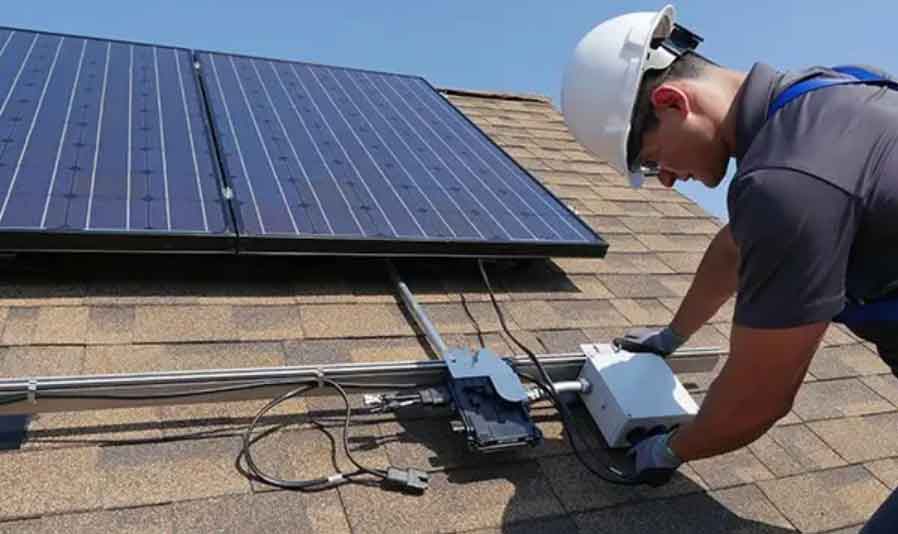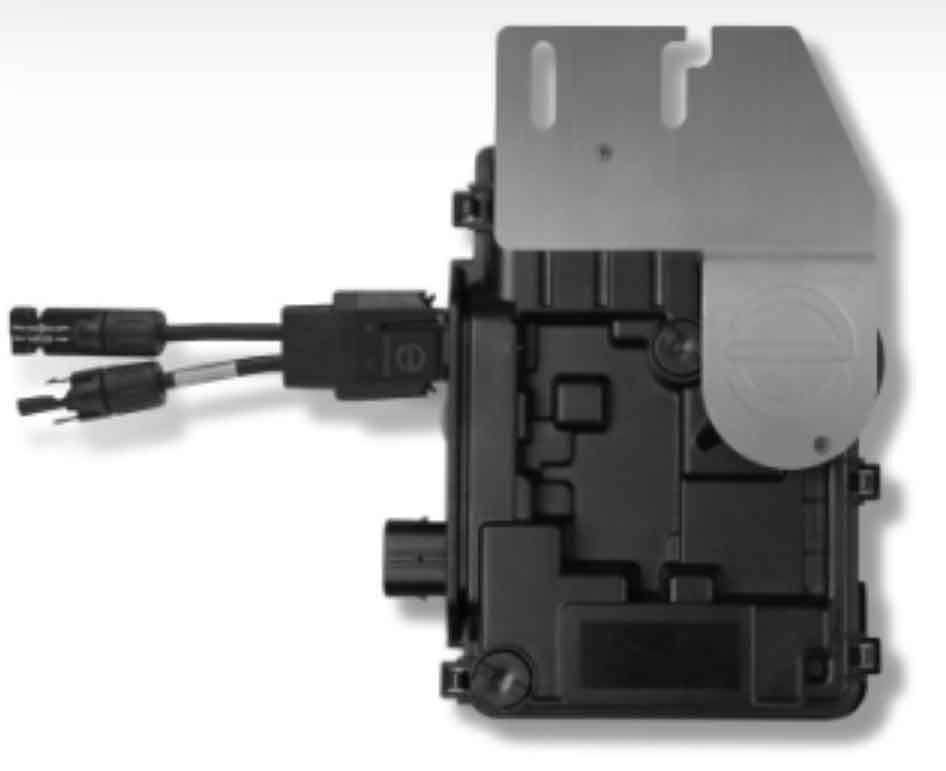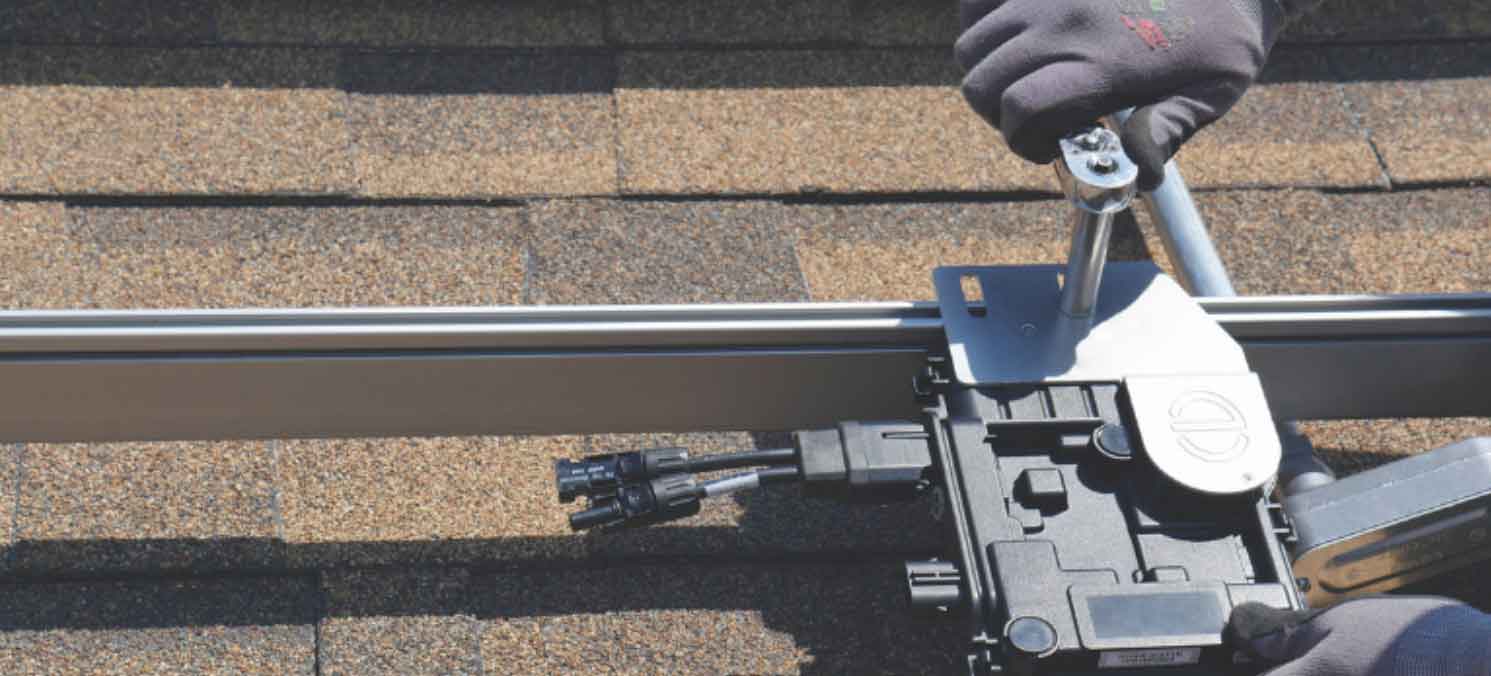Chapter 1: User Experience with Enphase Micro Inverter

Enphase Micro Inverter known for their efficiency and reliability, optimized to maximize the output of each solar panel. They offer a unique advantage of monitoring system performance in real-time, allowing users to identify and address any issues quickly. Enphase Micro Inverter work well in low-light conditions and are compatible with Enphase’s own brand of energy storage systems.
One significant advantage of Enphase Micro Inverter is their ability to work effectively in heavy shading conditions. They operate independently, meaning that if some panels are shaded, the others continue to produce power. This makes them a cost-effective option for smaller systems and properties with shading issues.
However, there are some drawbacks. Enphase Micro Inverter can be more expensive than traditional string inverters. There are also potential challenges with limited battery compatibility and difficulties in managing voltage rise issues. Users have reported issues with noise or electrical disturbances from home appliances affecting the inverter signal, which can impact the ability to monitor solar system performance.
In terms of performance, studies show that Enphase Micro Inverter produce about 1-3.1% more energy compared to traditional string inverters. This is largely due to their design, where each panel operates independently, maximizing electricity production even when some panels are underperforming. The Enphase Micro Inverter known for their high efficiency, often reaching a 97% efficiency rate.
When considering cost, Enphase Micro Inverter generally more favorable for smaller solar systems. For systems with no more than 10 panels, they offer a cost-effective solution. The price tends to increase for larger systems, where string inverters may be more economical.
Warranty coverage is another strong point for Enphase Micro Inverter. In the United States and European countries, for example, the warranty covers up to 25 years, which is among the best in the industry. However, in some regions like Australia, the warranty duration is shorter, typically around 10 years.
Overall, Enphase Micro Inverter highly regarded for their performance and reliability, but their cost and compatibility issues are factors to consider, especially for larger solar systems.
Chapter 2: Maximizing Solar Efficiency: The Revolutionary Impact of Enphase Micro Inverter
Enphase micro inverter represent a significant advancement in solar energy technology. Traditional solar panel systems usually employ a single, centralized inverter to convert the direct current (DC) electricity generated by solar panels into alternating current (AC) electricity for use in homes and businesses. However, microinverters, like those produced by Enphase, have revolutionized this setup in several ways:
- Increased Efficiency: Enphase micro inverter are installed at each solar panel, maximizing the energy production of each panel independently. This approach is particularly beneficial in conditions where panels are partially shaded or oriented in different directions, situations where traditional systems would see a significant drop in efficiency.
- Enhanced Reliability and Longevity: With Enphase micro inverter, the failure of one unit doesn’t affect the entire system, unlike central inverters, where a single failure can take down the whole system. This modular approach enhances overall reliability and makes maintenance easier and less costly.
- Improved Monitoring and Management: Enphase micro inverter often come with advanced monitoring systems that allow for panel-level performance tracking. This feature enables homeowners and businesses to closely monitor the output of each panel, identify issues early, and optimize their system’s performance.
- Safety: Enphase micro inverter convert DC to AC electricity right at the panel, reducing the risk of high-voltage DC power running across the rooftop. This safety feature is a significant advantage over traditional systems.
- Flexibility in System Design: With enphase micro inverter, it’s easier to expand a solar panel system. Additional panels with enphase micro inverter can be added without needing to match the existing setup’s specifications or upgrade the central inverter.
- Long-Term Financial Benefits: Although enphase micro inverter are initially more expensive than traditional inverters, their increased efficiency, durability, and lower maintenance costs can make them more cost-effective in the long run.
The technology and solutions offered by companies like Enphase are at the forefront of addressing global renewable energy challenges. By enhancing the efficiency and reliability of solar installations, Enphase micro inverter play a critical role in making solar energy more accessible and practical for a wider range of applications.
Chapter 3: How Enphase Micro Inverter Changing the Solar Energy

Enphase Micro inverter is a significant innovation in the solar energy industry, offering several benefits over traditional central inverters. Here’s how they’re changing the solar energy landscape:
- Increased Efficiency: Each solar panel in a system with Enphase Micro inverter operates independently, which means the system is less affected by shading or the performance of other panels. This leads to higher efficiency and more energy production.
- Enhanced Safety: Enphase Micro inverter convert DC electricity (generated by solar panels) to AC electricity at the panel level. This reduces the risk of high-voltage DC power, which can be more hazardous, traveling through the system.
- Greater System Reliability: Since each panel works independently with its Enphase Micro inverter, the failure of one panel or inverter does not impact the entire system. This increases overall reliability and reduces the potential for system-wide failures.
- Improved Monitoring and Maintenance: Enphase Micro inverter allow for advanced monitoring at the panel level. Homeowners and maintenance teams can easily identify and address problems with individual panels without affecting the rest of the system.
- Flexible System Design: Traditional systems may require a specific number of panels in a series, but systems with Enphase Micro inverter can be more flexible. This is particularly beneficial for roofs with complex designs or shading issues.
- Long-Term Cost Savings: While the initial investment in Enphase Micro inverter systems may be higher, they can offer better long-term savings due to higher energy production, lower maintenance costs, and longer warranties.
- Support for Energy Independence: Enphase Micro inverter support the trend towards energy independence and decentralization. With panel-level conversion, it’s easier to add or expand systems, integrate with battery storage, and manage energy use more effectively.
- Environmental Impact: By maximizing energy production from solar installations, Enphase Micro inverter contribute to the reduction of greenhouse gas emissions, helping in the fight against climate change.
In summary, Enphase Micro inverter represent a significant technological advancement in solar energy systems, offering enhanced efficiency, safety, reliability, and flexibility, which are crucial for the widespread adoption of solar energy.
Chapter 4: The Role of Enphase Micro Inverter in Energy Independence
Enphase micro inverter play a significant role in advancing energy independence, especially for homeowners and businesses investing in solar power. Here’s how they contribute:
- Efficiency and Reliability: Enphase micro inverter, like those from Enphase, convert direct current (DC) generated by solar panels into alternating current (AC) at each panel. This improves efficiency as each panel operates independently, reducing the impact of shading or panel malfunction on the entire system.
- Maximized Solar Energy Utilization: By optimizing the output of each panel, Enphase micro inverter ensure that the maximum amount of solar energy is harvested and used. This is particularly beneficial in varying weather conditions.
- Monitoring and Management: Enphase provides an integrated monitoring platform that allows users to track the performance of each solar panel. This helps in proactive maintenance and troubleshooting, ensuring consistent energy production.
- Grid Independence and Storage: Coupled with battery storage solutions, systems with Enphase micro inverter can store excess energy for use during non-sunny periods. This increases energy independence by reducing reliance on the grid.
- Longevity and Warranty: Enphase micro inverter generally have a longer lifespan than traditional central inverters. Enphase, for instance, often offers extended warranties, ensuring long-term performance and return on investment.
- Scalability: Enphase micro inverter make it easier to expand solar installations. Additional panels can be added without redesigning the whole system, making it a flexible option for gradually achieving energy independence.
- Safety: Since Enphase micro inverter convert DC to AC at the panel level, they reduce the risk of high DC voltage, which is a safety concern in systems with central inverters.
- Compatibility with Smart Grids: As energy systems evolve towards smart grid technology, the ability of Enphase micro inverter to work efficiently and communicate with the grid is crucial. They can respond to grid demands and contribute to overall energy stability.
In summary, Enphase micro inverter contribute to energy independence by enhancing the efficiency, reliability, and safety of solar power systems, making them a smart choice for those looking to reduce their dependence on traditional power grids.
Chapter 5:The Environmental and Economic Benefits of Using Enphase Micro Inverter
The use of Enphase Micro Inverter offers several environmental and economic benefits:
- Increased Energy Efficiency: Enphase Micro Inverter optimize the output of each individual solar panel in a solar array. This means that even if one panel is shaded or underperforming, the others can still produce energy at maximum efficiency. By maximizing the output of each panel, they can generate more electricity from the same solar array compared to systems with traditional string inverters. This efficiency leads to higher energy production and reduced waste, contributing positively to environmental sustainability.
- Better Performance in Low-Light Conditions: Enphase Micro Inverter designed to capture more energy in low-light circumstances, such as during dawn, dusk, or on cloudy days. This capability ensures a more consistent and reliable energy production, contributing to a more sustainable and efficient use of solar energy.
- Reduced Carbon Footprint: By improving the efficiency of solar energy systems, Enphase Micro Inverter contribute to a reduction in the carbon footprint of energy production. Solar energy is a clean, renewable resource that reduces reliance on fossil fuels, thus contributing to lower greenhouse gas emissions.
- Economic Savings: While the initial cost of Enphase Micro Inverter can be higher than traditional inverters, the increased energy production and efficiency can lead to greater savings over time. Users can benefit from reduced energy bills and potentially earn credits from excess energy fed back into the grid, depending on local policies.
- Longevity and Reliability: Enphase Micro Inverter known for their durability and have a low failure rate. This reliability translates into fewer replacements and repairs over time, which not only saves money but also reduces waste associated with inverter replacement and maintenance.
- Monitoring and Management: The integrated monitoring system allows users to track the performance of each solar panel, enabling proactive maintenance and management. This feature ensures the system is always operating at its best, reducing energy waste and optimizing economic returns.
- Grid Support and Stability: Enphase Micro Inverter can provide benefits to the electric grid by enabling more stable and efficient integration of solar energy. This is particularly important as the proportion of renewable energy in the grid mix increases.
In summary, Enphase Micro Inverter offer significant environmental benefits through increased renewable energy efficiency and reduced carbon emissions, alongside economic advantages such as long-term cost savings and enhanced energy management capabilities.
Chapter 6: Integrating Enphase Micro Inverter into Smart Home Systems

Integrating Enphase Micro Inverter into a smart home system can enhance the overall efficiency and control of your home’s energy management. Here’s how this integration works and the benefits it can provide:
- Smart Home Compatibility: Enphase Micro Inverter can connect with various smart home systems and devices. This integration allows for seamless control and monitoring of your home’s energy usage.
- Real-Time Energy Monitoring: Through the Enphase app or compatible smart home platforms, homeowners can monitor the energy production of each solar panel in real-time. This feature provides insights into your home’s energy consumption patterns, enabling more informed decisions about energy use.
- Energy Management: Smart home systems can utilize data from Enphase Micro Inverter to optimize energy usage. For example, during peak solar production hours, the system can automatically run energy-intensive appliances, maximizing the use of solar energy and minimizing grid dependence.
- Remote Control and Automation: Homeowners can remotely control and automate their home energy systems. This includes managing solar energy production, battery storage, and energy consumption, all from a smartphone or other devices.
- Enhanced Efficiency: By integrating with smart home technology, Enphase Micro Inverter can help in efficiently distributing and using solar energy, reducing wastage, and improving overall home energy efficiency.
- Demand Response and Load Shifting: Smart homes integrated with Enphase Micro Inverter can participate in demand response programs. During peak demand times, your smart home system can reduce energy consumption or draw energy from the battery storage instead of the grid, easing the burden on the grid and potentially providing financial incentives.
- Compatibility with Other Smart Devices: Enphase’s system can often integrate with other smart home devices such as thermostats, lighting systems, and security systems, offering a cohesive and automated home energy ecosystem.
- Enhanced Grid Support: Smart home systems with Enphase Micro Inverter can provide grid support services like voltage regulation and frequency support, contributing to grid stability.
- Scalability and Flexibility: As you expand your smart home system or solar array, Enphase’s technology can scale accordingly, offering flexibility for future upgrades or modifications.
To achieve this integration, it’s essential to ensure that your smart home hub or platform is compatible with Enphase’s technology. Consult with a smart home specialist or a solar energy installer for specific integration requirements and steps to ensure a seamless and effective setup. Integrating Enphase Micro Inverter into your smart home not only enhances energy efficiency but also contributes to a sustainable and technologically advanced living environment.
Chapter 7: Closer Look at the Reliability and Performance of Enphase Micro Inverter
Enphase Micro Inverter, particularly the IQ 7 and IQ 8 series, stand out in the solar energy market for their unique features and reliable performance. Enphase Micro Inverter compatible with a wide range of solar panels, making them versatile for different solar system designs. One of the key benefits of Enphase micro inverter is their advanced monitoring capabilities, which allow for individual solar panel monitoring. This granular level of detail aids in identifying and addressing faults quickly, ensuring optimal performance and longevity of the solar system.
The IQ 7 series offers a variety of sub-series models, each designed to handle solar panels with different wattage capacities. This range has shown a low failure rate and an EU Efficiency of 96.5%, which is considered excellent for Enphase Micro Inverter. In comparison to traditional string inverters, the IQ 7 series was found to produce 1% to 3.1% more energy.
The more recent IQ 8 series takes a step further by featuring grid-forming capabilities, which can supply power even during grid outages. This series is also compatible with Enphase’s battery solution and can operate in both grid-tied and off-grid scenarios.
Enphase Micro Inverter recognized for their efficiency, with models like the IQ 7X reaching a CEC efficiency of up to 97.5%. Additionally, these inverters can operate over a wide range of temperatures and humidity levels, and their cooling system relies on natural convection, eliminating the need for fans.
However, there are some limitations to consider. The cost per watt is higher due to the requirement of an inverter for each panel. Enphase focuses primarily on Enphase Micro Inverter, which might limit options for customers who prefer other types of inverters. Moreover, the extended warranty offered by Enphase does not cover the labor cost of fault-finding or reinstalling faulty Enphase Micro Inverter. Battery compatibility is another issue, as Enphase micro inverter primarily compatible with AC-coupled batteries, which can limit options and configurations for integrating larger battery systems.
In terms of installation, Enphase Micro Inverter like the IQ 7A are known for their easy installation, high efficiency, and ability to operate with a variety of solar panel types. Enphase Micro Inverter have a CEC efficiency of 97% and support dual MPPTs. Their software architecture is designed to ensure performance throughout usage, and their compatibility with internet-connected monitoring systems allows for detailed performance tracking.
In summary, Enphase Micro Inverter offer high efficiency, advanced monitoring, and flexible compatibility with various solar panels, making them a strong choice for solar energy systems. However, their higher cost and specific battery compatibility need to be considered when planning a solar installation.
